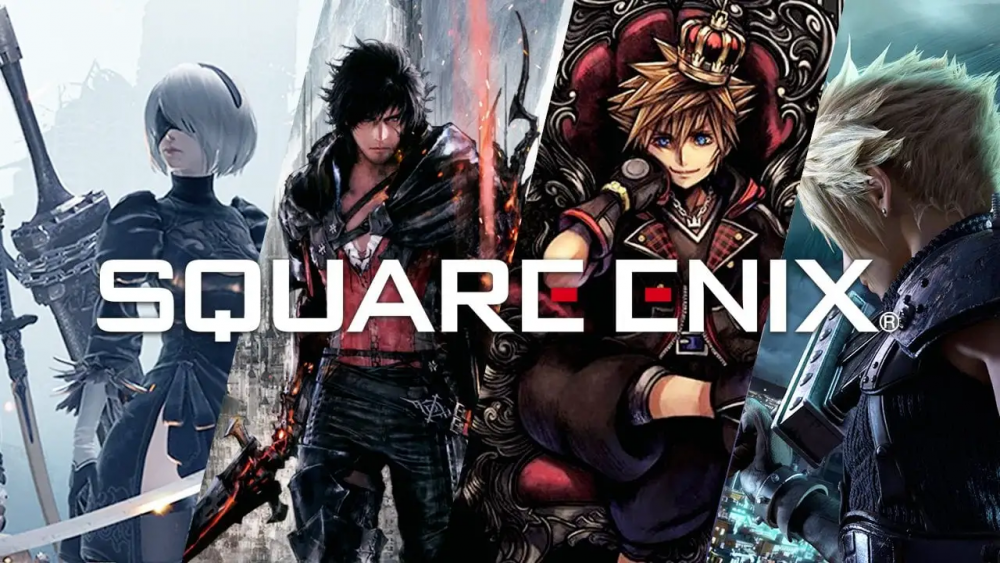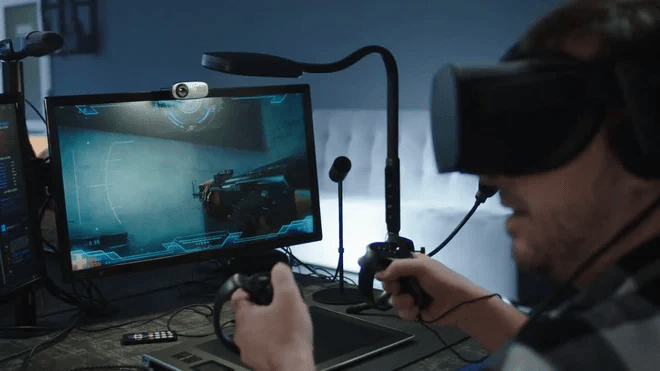In the past few years, the game world and the blockchain and cryptocurrency space have come together in a way that has changed everything. Even though cryptocurrencies have gotten a lot of attention, game studios that have usually worked in the Web2 world have started to look into the possibilities in the crypto space.
This blog post goes into detail about the exciting journey Web2 game studios are on as they take their first steps into the world of cryptocurrency. It talks about the possible advantages, challenges, and important things to think about along the way.
Let’s get to know these game studios together, their early efforts, and what they have already achieved in the Web3 industry.

The crypto landscape is the large ecosystem of cryptocurrencies, blockchain systems, decentralized apps (DApps), non-fungible tokens (NFTs), and more. At the heart of this landscape is the idea of decentralization, which means that power and control are shared among players instead of being held by a small number of groups.
Blockchain technology, which is what makes cryptocurrencies work, offers a way to record and verify transactions that is open, safe, and hard to change. In standard centralized systems, data and processes are controlled by a central authority. Blockchain, on the other hand, allows for a network that no one can trust and is not centralized. This means that the people involved can do business and talk to each other directly, without the need for middlemen.
The idea of smart contracts is an important part of the crypto world. Smart contracts are deals that carry out themselves based on rules and conditions that are written into the blockchain. They make it possible to automate and carry out deals when certain conditions are met. This gets rid of the need for middlemen and makes things more efficient.
Also, non-fungible tokens (NFTs) have become very famous in the cryptocurrency world. NFTs are one-of-a-kind digital assets that can be used to show ownership of things like digital art, collectibles, and in-game assets. NFTs have given artists new options by letting them make money from their digital works and giving buyers proof of ownership.
Web2 game companies, which have always been limited by centralized gaming platforms, are starting to see what Web3 games can do. Web3 games offer new ways to play by using the power of blockchain technology, currency, and open networks.
By adding blockchain to their games, Web2 studios can add features like real ownership of in-game assets, provable scarcity, interoperability between games, and decentralized government. These features give players more power by letting them have full control over their digital assets, trade them easily, and even make cryptocurrencies while playing.
Web3 games also support the idea of player-owned businesses, in which players can help build the game, make decisions about it, and even get a cut of the money the game makes. This model blurs the line between players and producers, making games more fun and rewarding for everyone.
Web2 game companies have a lot of chances to make Web3 games thanks to the crypto world. By using the power of blockchain technology, cryptocurrencies, and decentralized systems, game studios can open up new ways to play games, giving players better experiences and making the gaming environment more engaging and interactive. In the next parts of this blog post, we’ll look at some cases of Web2 game studios branching out into Web3 games. These examples will show how new ideas and technologies are changing the gaming business as we know it.
But first, let’s have a quick look at the benefits and how the transition takes place!

Benefits of Transitioning to Web3:
Hardships and Challenges:
Technological Advancements:
Even though there are difficulties, Web2 game companies that move into the Web3 space stand to gain a lot. From accepting true ownership and interoperability to giving players more power and supporting player-owned economies, there is a huge amount of room for innovation and experiences that are driven by the community. By dealing with problems, taking advantage of new technologies, and following the Web3 principles, these companies are changing the future of gaming and making it a better place for both players and producers.

Ubisoft
Champions Tactics: Grimoria Chronicles, a ‘PvP tactical RPG experimental game’, is Ubisoft’s first Web3 title. It is the company’s most recent venture into Web3 content in the wake of the NFT-based proprietary Ubisoft ‘Quartz’ system’s largely dismal failure to enable players to access exclusive in-game material for just one of its games – the critically panned Ghost Recon Breakpoint.
The Oasys blockchain, on which Champions Tactics is built, was launched in early 2022 with support from a number of video game companies, including Square Enix, Bandai Namco, Sega, and Ubisoft.
Players may “assemble a team of mythical Champions, engage in exhilarating tactical battles against other players, and discover the legends of the dark and mystical world of Grimoria,” according to Ubisoft. The game’s blockchain functionality has not yet been specified, although it is expected to feature the aforementioned champions—possibly in the form of collected NFTs.
Like other blockchain-based games, Champions Tactics has received a mixed reception since its announcement. Thousands of people have watched the new teaser, yet only 37 people have subscribed to the game’s YouTube page.
The majority of the video’s comments are equally unfavorable. While some gamers have expressed pleasure in seeing the possibilities of Web3 games explored by a large firm like Ubisoft, many others have expressed their dismay, arguing that Ubisoft’s emphasis on Web3 technology is causing the brand to lose reputation and player goodwill.
Ubisoft CEO Yves Guillemot implied in statements made around the end of 2022 that the company’s venture into Quartz NFTs was only research. He said, “We should have said we were working on it, and we’ll bring it to you when we have something that gives you a real benefit.”
The future of Ubisoft’s exploratory attempts into the Web3 realm will probably depend on the outcome of Champions Tactics: Grimoria Chronicles. For now, keep checking back for additional information as this game’s development goes on.
Square Enix
Square Enix, the creator of the popular Final Fantasy series and a producer of video games, said that it is collaborating with PC gaming platform Elixir to increase the uptake of Web3 games.
Elixir’s platform features both conventional and Web3 video games, and it just included the well-known Epic Games Store library. Elixir seeks to further combine the now-separate Web2 and Web3 gaming worlds with Square Enix on board.
“This partnership with Elixir Games represents yet another step for Square Enix to explore the promise of Web3-decentralized gaming,” stated Square Enix Director of Business Development Hidaki Uehera in a statement.
Elixir CEO Carlos Roldan believes the partnership with Square Enix will help offer Web3 games to a wider audience, despite the fact that nothing is known about how they will function together.
Since many years ago, Square Enix has been vocal about the promise of Web3 gaming, even spearheading a funding round for the metaverse game The Sandbox in 2020.
Such crypto game economies, according to President Yosuke Matsuda’s early 2022 letter, are a novel technology that is “here to stay.” Matsuda previously stated that 2021 was the “Year One” for NFTs in the eyes of Square Enix. And in late 2022, Square Enix revealed Symbiogenesis, its first Web3 game, which would use Polygon, an Ethereum scaling network, for its NFT components.
A variety of Web3 games, including the MMORPG World Eternal Online, oddball card battlers like Raini: Lords of Light and Elemental Raiders, and RPGs like Chronos and Bornless, have been added to Elixir’s launcher. These games are available on Solana, BNB Chain, Ethereum, and Polygon.
The first video and the official website for Square Enix’s new NFT game Symbiogenesis were just published. While the quick teaser doesn’t tell much about the game, the website does, and it may pique the attention of gamers who are curious about or don’t mind NFTs in their games.
The details published on Square Enix’s Symbiogenesis website have been conveniently summarized by Games Hub. 10,000 “collectible artworks,” or NFTs, will be included in the game and have “real game utility.” Players will be able to utilize these pieces of art as their profile images; they will be based on the various characters’ races and occupations. Since the game is divided into six main chapters, each of which has its own set of NFTs that add to the narrative, they won’t all be accessible at once.
In terms of the plot, Symbiogenesis takes place on a floating continent, which is the only safe location to live on a polluted Earth. You can see the floating continent in the trailer. There appears to be no more fighting, so people live in peace while gradually trying to remember the past. Sadly, a dragon attacks, endangering the continent, and mankind must unite to repel the danger. Overall, it seems like a typical high-fantasy RPG story, and it’s unclear how important or ubiquitous the NFTs will be to enjoying the Square Enix game.
All chapters may be finished without buying NFTs, according to Square Enix, however owners of the collector artwork will receive a few perks. For instance, those who buy character NFTs may read their background, win extra artwork after doing a quest tied to that character, and earn rank experience points dependent on how many NFTs they own.
Currently, symbiogenesis is being developed.
Atari
Atari SA and its subsidiaries (“Atari”), one of the most recognizable consumer brands and creators of interactive entertainment, introduces Atari X, a project that unifies Atari’s blockchain-related activities into a single enterprise that is entirely under Atari’s control. The project will promote the creation of a strong blockchain ecosystem that integrates community, utility, and gameplay. Atari reinforces its dedication to blockchain and its conviction that it is a crucial component of its company and strategy by unveiling Atari X.
“We believe that blockchain will continue to grow to be a significant part of our business, and will create new ways for us to interact and collaborate with partners, players and fans of our brand,” said Wade Rosen, Chairman and CEO of Atari. “Atari X is where we will harness all of our energy and creativity related to blockchain and build out an exciting Web3 ecosystem for our community.”
The company is already putting effort into making the new branded token for Atari X. Atari made this announcement on April 18, 2022, and has since made strides in assembling the team, bringing on important partners, and defining the token’s usefulness, governance, and tokenomics. Atari and NiftyLabs have a contract in place for Atari to serve as the project’s main developer.
Atari is actively collaborating with the developer NiftyLabs, the open-world metaverse The Sandbox, the metaverse arcade experience studio Arcade O.G., the metaverse and NFT innovation and investment platform Everyrealm, the emerging technology business Virtual Human Studios.
The Company will also be looking for opportunities to work with top-notch partners that are pushing the envelope with Web3 in order to expand its ecosystem more quickly and robustly. These partnerships will foster chances for originality and innovation, provide benefits and services, and attract new members to grow the community.
Atari makes an effort to benefit its users and community. Tokens, blockchain games, NFT efforts, and more fall under this category. Atari also encourages community participation in the growth of its company. The community will serve as Atari X’s main source of motivation and inspiration.
The first NFT collection to be released on Ethereum is called 50 Years of Atari. The collection of 2,600 one-of-a-kind generative art posters was made by renowned Brazilian artist Butcher Billy and gives owners access to the Atari X Web3 environment.
All NFT holders will have access to private discord channels, the Web3 alpha, and opportunities with our partners that are exclusively available to NFT holders. What else? Atari may also assist the holder if they want to display their one-of-a-kind memorabilia. These NFTs may be converted into fine prints, which holders can then put on walls to be admired by visitors.
The Sandbox just unlocked 90 new metaverse experiences with the release of Alpha Season 3. Notably, one of the key landowners in The Sandbox is Atari. Sunnyvale, a novel experience that lets users explore, mingle, and encounter non-player characters based on Atari characters, has just been released.
The Web3 gaming experience that Atari X will provide players is exciting and warrants the wait.

Web2 game companies are taking their first steps into the ever-changing world of Web3 and crypto integration. This is the start of an exciting trip. It’s a job with lots of possibilities, challenges, and chances to come up with new ideas. By using blockchain technology, cryptocurrencies, and non-fungible tokens (NFTs), game companies could change how we play, own, and make money from our favorite games.
As we’ve talked about the benefits of integrating crypto, the challenges of making the switch, the power of working together, and the great things that pioneering companies have done, it’s clear that the future is bright. Web2 game companies have the chance to open up new levels of creation, make it easier for players to get involved, and use fun play-to-earn economies.
Even though the road ahead may have its share of technical challenges and rules to follow, the payoffs are huge. Imagine a gaming world where players truly own their in-game assets, where creativity and worth thrive, and where groups come together in decentralized metaverses. The only thing that stops us is our imagination.
So, we praise all the Web2 game companies that are moving into the crypto area for having the courage and foresight to do so. Open your mind to this new territory, work with other thinkers who think the same way, and don’t be afraid to think outside the box. The gaming industry is on the edge of a new era, where Web2 and Web3 will come together to create new experiences that will change what it means to be a player.
As players and fans, let’s cheer these studios on as they start this exciting journey. Stay tuned, keep looking around, and get ready to be amazed by what lies ahead. The future of games is being made, and we can all work together to make a world where your mind can go as far as it wants.
Game on, and welcome to the new age of games driven by crypto!
AMG is a decentralized autonomous organization, bridging the gap between players and web3 game developers, bringing the next billion users into the metaverse.
AMG acquires non-fungible tokens (NFTs) used in blockchain-based games and acts as a trusted party advocating for games in the metaverse, thus bringing more people in.
We are leveraging strong partnerships with games developers and Yield Guild Games to launch our organization to the forefront of the Central/Eastern European gaming market.
AMG DAO has been building a game-focused crypto wallet, guild management, and other tools to keep contributing to the ecosystem, in order to aid the creation of games with sustainable economies.
AMG DAO Social Media Links: